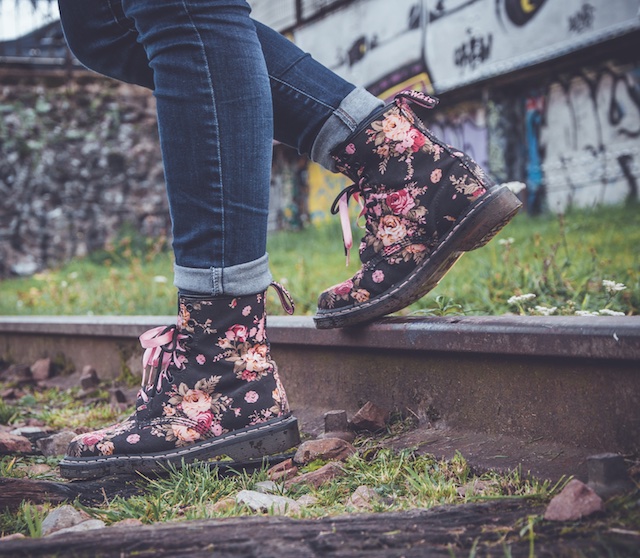I’m 26, I live in the San Francisco Bay Area, and I don’t drive.
No, I don’t have a car. No, I don’t even have a license. And no, I have no interest in procuring either.
How is this possible, you might ask? I get around by walking, public transportation, and carpooling/ride-sharing apps.
The other question people always ask is: why?
Well, when I was 16—the age when most Americans get their driver’s license—I was living in New York City. So, no need to drive. Then I went to college—and then to graduate school. Again, no need to drive. By the time I moved to the Bay Area, ride-sharing apps like Uber and Lyft were taking off, and they have made the need to have one’s own car almost non-existent (at least where I live).
But still, why don’t I have any interest in learning to drive?
Admittedly, the primary reason is that I’m scared. With my anxiety levels already through the roof, I don’t trust myself in the driver’s seat. Plus, having to deal with traffic, parking (especially in the Bay Area), car insurance, and gas—it all just seems like more trouble than it’s worth.
I can’t even count the number of people who tell me that I need to get over my fear. That I can’t grow if I don’t get out of my comfort zone. That I’ll discover a whole new sense of freedom when I’m able to drive for myself.
And they’re probably right.
But, below the surface are more important reasons why I choose to make a conscious choice not to get behind the wheel—reasons that have implications for my own well-being and that of society. Below are five of those reasons, which might make you reconsider your driving habits as well.
1. Health. Having spent much of my youth in New York City, I am accustomed to walking and taking public transportation to get around. In fact, walking is my preferred method of transportation, and my idea of “walking distance” is much longer than what most people would consider it to be.
Walking for between 30 minutes and an hour a day can help you lose (and/or maintain) weight, strengthen your bones and muscles, sleep better, and prevent heart disease and diabetes. What’s more, walking also improves mindfulness, boosts creativity, slows cognitive decline, and improves your mood.
Public transportation also generally involves some degree of walking and going up and down stairs. If you are able to do so, this is a great way to get your heart rate up and build your strength and endurance.
While it is true that not all streets, crossings, and public transportation options will be accessible for everyone, finding a way to get yourself outside and moving more has innumerable benefits for your quality of life.
2. The Environment. Cars emit such pollutants as carbon dioxide, carbon monoxide, nitrogen oxide, sulfur oxides, hydrocarbon, and lead. These pollutants affect the ozone layer and can disrupt global weather patterns and ecosystems. Some of them contribute to the formation of acid rain, which damages trees, crops, and buildings—and makes soils, lakes, and streams more acidic. These pollutants are also contributing factors to heart, respiratory, and nervous system conditions.
Electric and environmentally friendly cars can certainly help. So can fewer cars on the road.
3. The Gig Economy. Ride-sharing apps like Uber and Lyft have enabled normal, everyday folks to participate in the gig economy. Drivers can earn money by picking up and dropping off passengers at any time they want and for as many hours as they want. Some drivers drive to supplement their regular income, while others earn their living entirely from driving. While some of the companies’ policies on compensating drivers are not perfect, progress has been made, and you can also tip your driver as much as you want.
Instead of spending my money on a car, gas, insurance, and in some cases, parking—I would rather spend it on ride-sharing apps and directly contribute to someone else’s livelihood.
4. The Chance to Meet New People. When using ride-sharing apps, you have the opportunity to interact with your driver. In some cities, Uber and Lyft give you the option to carpool with other passengers traveling in the same direction, and you can interact with them as well. Using ride-sharing apps allows you to meet people you may never have had the opportunity to meet had you just been driving in your own car.
Many of my Uber rides have been filled with stimulating conversations on a whole range of topics and in a hodgepodge of languages. I have made friends with and kept in touch with both drivers and fellow passengers, have connected some of them with job opportunities, and yes, have even gone on a date with one of them. (It was mediocre, in case you were wondering.)
Taking public transportation allows you similar opportunities to meet and interact with people you may not have otherwise had the chance to.
And fear not—if you’re using a ride-sharing app and have had a negative experience with a driver or fellow passenger, you can always report it, and the company will take any necessary action.
5. The Chance to Just Do Nothing. In today’s world, simply doing nothing is highly underrated. In the event that I’m in an Uber or train and am not feeling particularly social, I can just chill out, disconnect from everything, and do nothing. In fact, it might be the only chance I get all day to do nothing.
Hundreds of thousands of thoughts go through our heads each day. Doing nothing gives your mind a much needed break and a chance to recharge. This in turn improves your mental health and boosts your productivity and creativity throughout the day.
Doing nothing also allows you to get in touch with yourself—something many of us don’t get to do nearly enough.
I consider myself lucky to live in an area where I’m not dependent on a car. Should I someday find myself in an environment where this is not the case, then perhaps I will need to adapt.
In the meantime, I feel confident that my decision not to drive has had a positive impact on my life and the lives of many around me.
~
References:
1. HybridCars.com. Health and Environmental Effects of Driving.
2. INSEAD Knowledge. (2014). The Importance of Doing Nothing.
3. SFGATE. Am I Harming the Environment by Driving?
~
~
Author: Pavita Singh
Image: Unsplash
Editor: Yoli Ramazzina
Copy editor: Leah Sugerman
Social editor: Nicole Cameron









Read 0 comments and reply